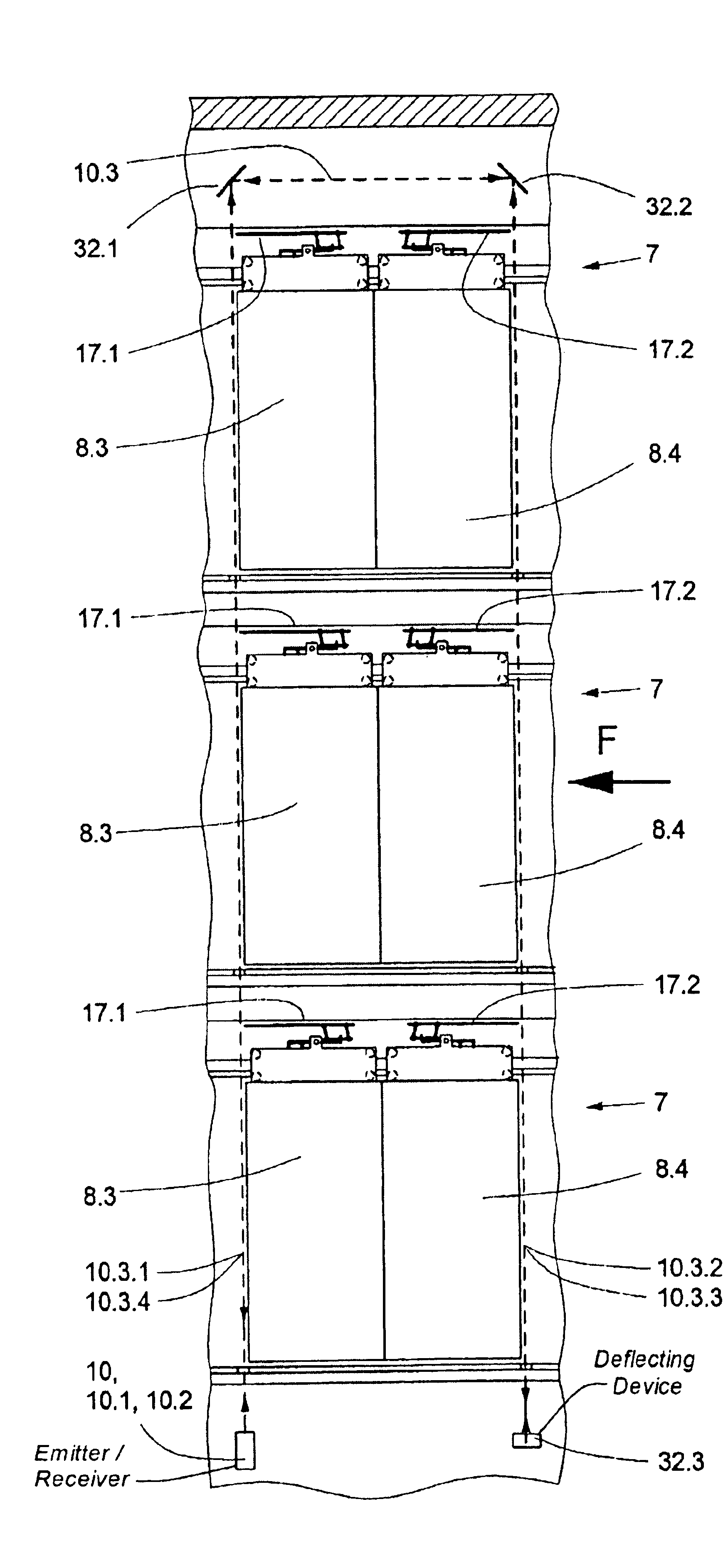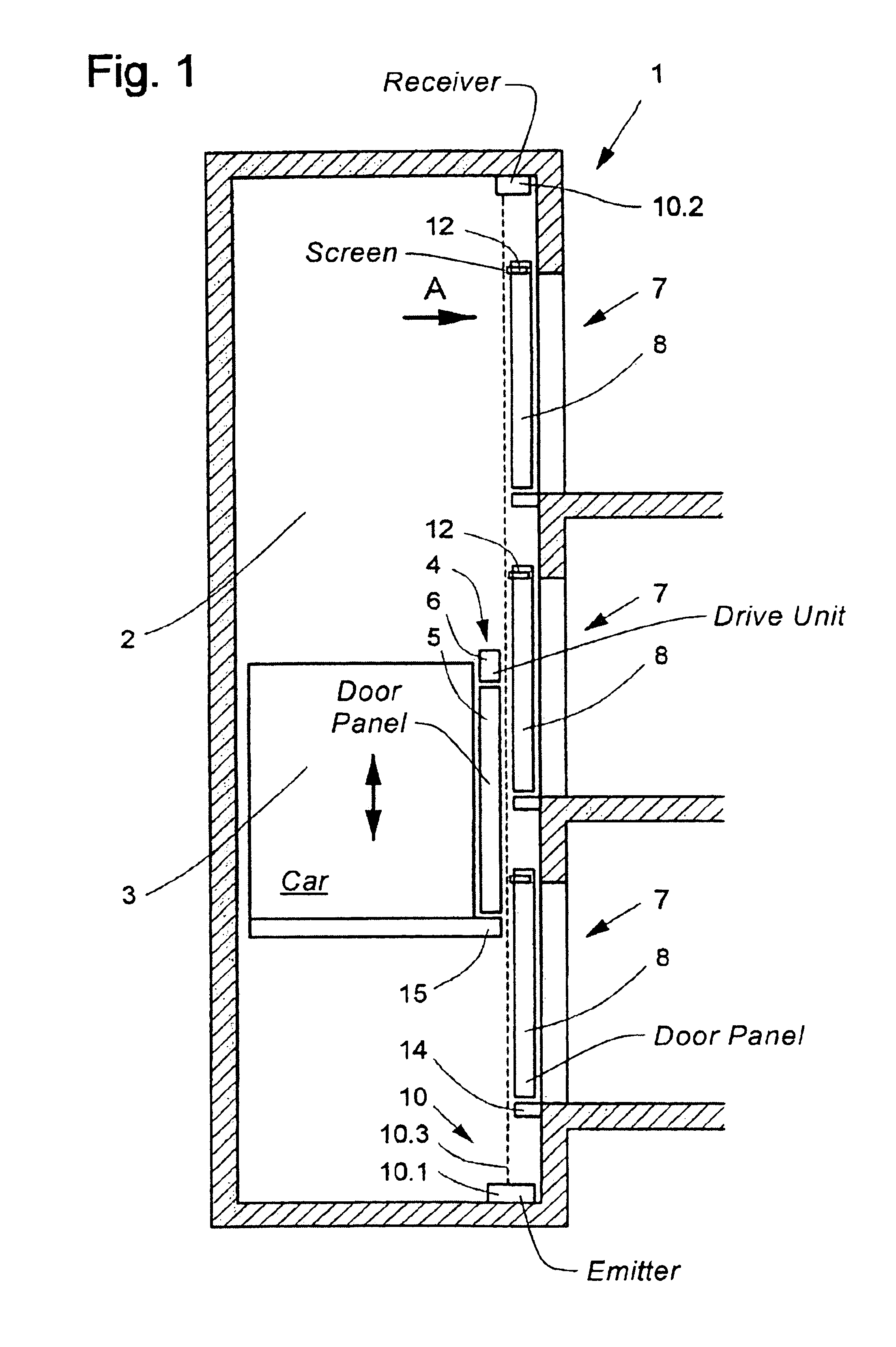Method of contactlessly monitoring elevator shaft doors
a technology of elevator shaft and door, which is applied in the direction of elevators, transportation and packaging, building lifts, etc., can solve the problems of high voltage decay, inability to detect defective safety contact of individuals, and inability to find incorrectly closed shaft doors in buildings with many floors, so as to reduce production costs, reduce sensitivity, and simplify the effect of beam system
- Summary
- Abstract
- Description
- Claims
- Application Information
AI Technical Summary
Benefits of technology
Problems solved by technology
Method used
Image
Examples
Embodiment Construction
[0043]An elevator installation 1 with an elevator shaft 2 and an elevator car 3 is illustrated schematically in FIG. 1. The elevator car 3 is equipped with a car door 4, which has two car door panels 5 which, for opening and closing, are horizontally displaced by a door drive unit 6 mounted at the elevator car. The elevator shaft 2 includes three shaft doors 7, which each have two shaft door panels 8. The opening and closing of the shaft door 7 is effected by horizontal movement of the shaft door panels 8 thereof when the elevator car 3 is disposed at the corresponding floor, wherein the drive force for this horizontal movement is transmitted by means of a door actuating mechanism from the car door panels 5 to the shaft door panels 8.
[0044]In the closed state, the shaft door panels 8 are locked by means of a shaft door lock—not shown here—with a stationary part of the shaft doors. An emitter installed in the region of the shaft pit and near the shaft wall containing the shaft doors ...
PUM
 Login to View More
Login to View More Abstract
Description
Claims
Application Information
 Login to View More
Login to View More - R&D
- Intellectual Property
- Life Sciences
- Materials
- Tech Scout
- Unparalleled Data Quality
- Higher Quality Content
- 60% Fewer Hallucinations
Browse by: Latest US Patents, China's latest patents, Technical Efficacy Thesaurus, Application Domain, Technology Topic, Popular Technical Reports.
© 2025 PatSnap. All rights reserved.Legal|Privacy policy|Modern Slavery Act Transparency Statement|Sitemap|About US| Contact US: help@patsnap.com



